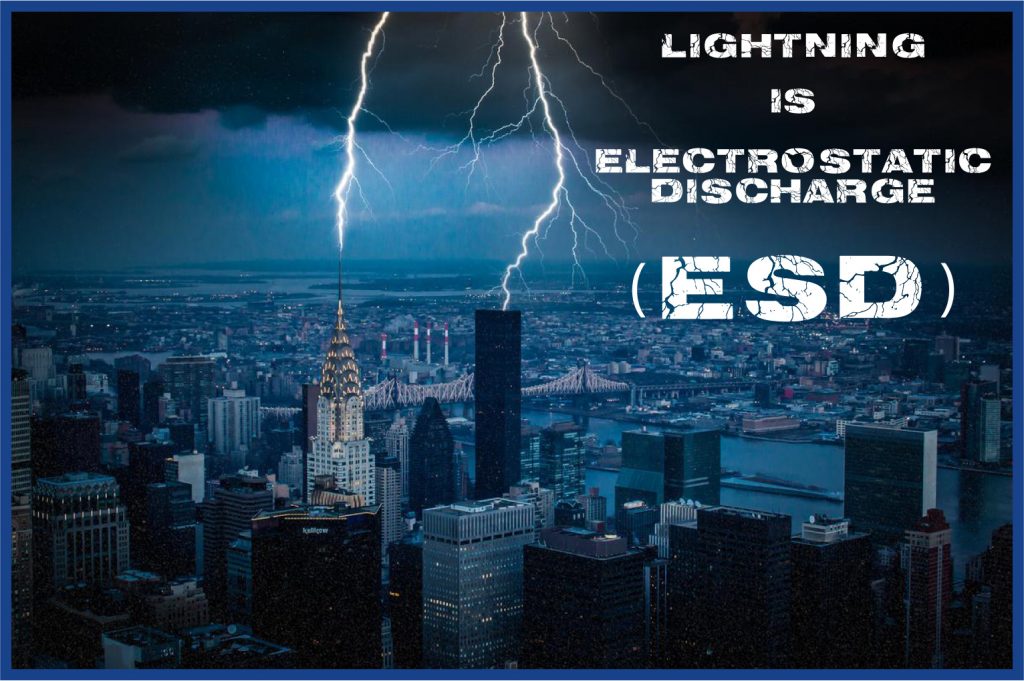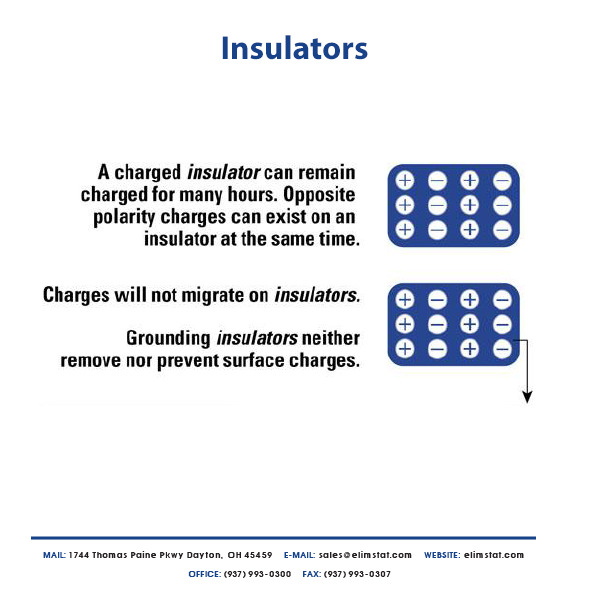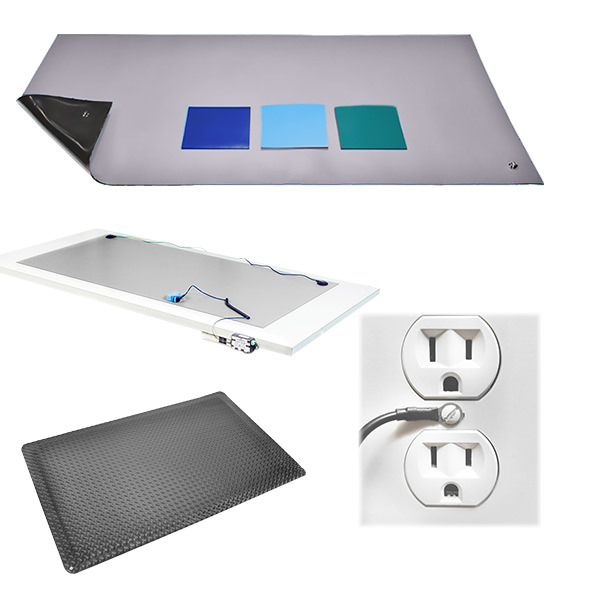
Fundamentally, ESD (electrostatic discharge) is a discharge of static energy that emits heat, light, and sound.

However, in electronics manufacturing, ESD mostly occurs at micro scales invisible to our senses of sight and sound.
This is problematic because we cannot detect it easily. In fact, most ESD damage can only be seen with the aid of a microscope.
Worse, we know from controlled testing[1] that merely having an ESD Program that mandates all personnel to wear wrist straps and
In 1983, Western Electric found that implementing an ESD Program reduced up to 75% of the device failures they were experiencing at one of their plants.

In the United States, the standards used in ESD Programs are codified by the American National Standards Institute, which has adopted the ESD Association (a global association) standards.
For those interested in developing ESD Awareness at their workplace, the ESD Association offers regular training and certification.
Implementing an ESD Program involves standardizing ESD Grounding Methods at your workplace and conducting periodic testing or monitoring to ensure all fabrics, plastics, and equipment comply with ANSI / ESD Association standards.
Insulators and Static
ESD is caused by static on the surface of insulating materials: carpets, glass, plastics, wood, etc.

Insulators can hold positive and negative charges in pockets across their surfaces.
When enough static builds upon the surface of an insulator, it explodes as electrostatic discharge (ESD), which damages electronics.
You can test materials for resistance by using metering kits to run voltage through ESD products and then measure their resistance.
The ESD Association codifies these tests. Some of these are discussed in detail here on Elimstat.com.

So, how do you read the results from measuring? You reference the Triboelectric Series. This is how you will know if something is a conductor or static dissipative, meeting a standard, and develop your control limits.
| Material Type | Ohms Resistance |
|---|---|
| Conductors | Less Than 1 x 106 Ohms (1 megohm) |
| Static Dissipative (ESD Association Recommendations) | Between 1 x 106 Ohms (1 megohm and 1 x 10 |
| Static Dissipative (Plastics) | Between 1 x 109 Ohms (1 gigaohm) and less than 1 x 1012 Ohms |
| Insulators | Greater Than 1 x 1012 Ohms |
Grounding versus Ionization
So, how do you deal with insulators?
Grounding creates pathways for electrons to travel around the insulators into the ground.

Grounding involves using a mat and a wrist strap to conduct static to ground.
This involves
It also involves connecting your body to the ground. This involves wearing appropriate grounding apparel like wrist straps and heel grounders.
Ionizing air molecules with fans or blowguns enables you to blow air molecules that contain positive and negative charge over insulative surfaces so that the charge decays rapidly off them.
ESD Air ionizers are either operated on alternating current or direct current blowing patterns through emitter points located in front of the fans blowing the air.
Depending upon the geometry of your static problem ionizers can be effective at mitigating charge on assembly lines, in clean room gowning rooms, inside machines, and at soldering workstations.
Ionizers reduce charges that prevent ESD but are also effective at eliminating electrostatic attraction of particles onto sensitive electronics and people entering a clean room.
Alternating Current is preferred to blast charge off surfaces at close range.
Direct Current is preferred when you want consistent waves of
The costs of preventing ESD can always be evaluated by performing lot tests. If you consider implementing an ESD Program, grounding is generally cheaper to start with. However, for static being created inside a machine or by fast-moving assembly lines, ionization is almost the only way to ensure charge decay.
Notes
- Western Electric North Andover Works (1983). “ESD – How Often Does It Happen?” G.T. Dangelmayer, EOS-5, pp.1-5, 1983.
